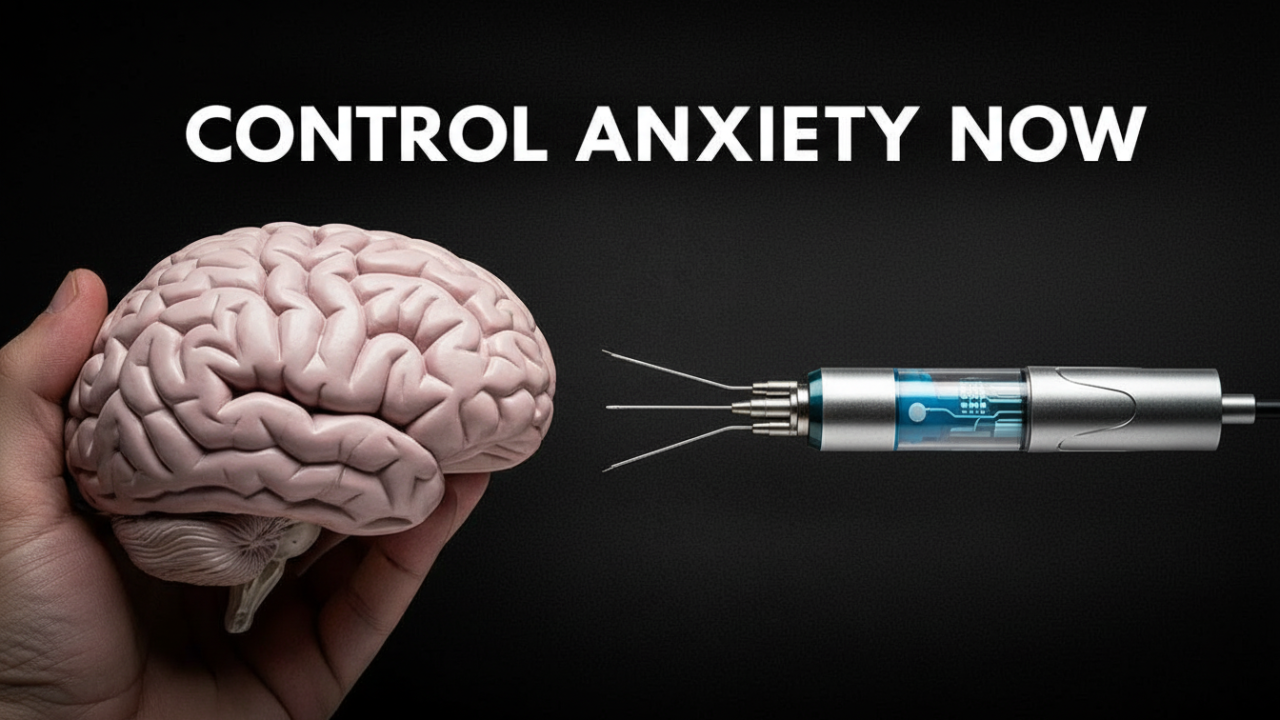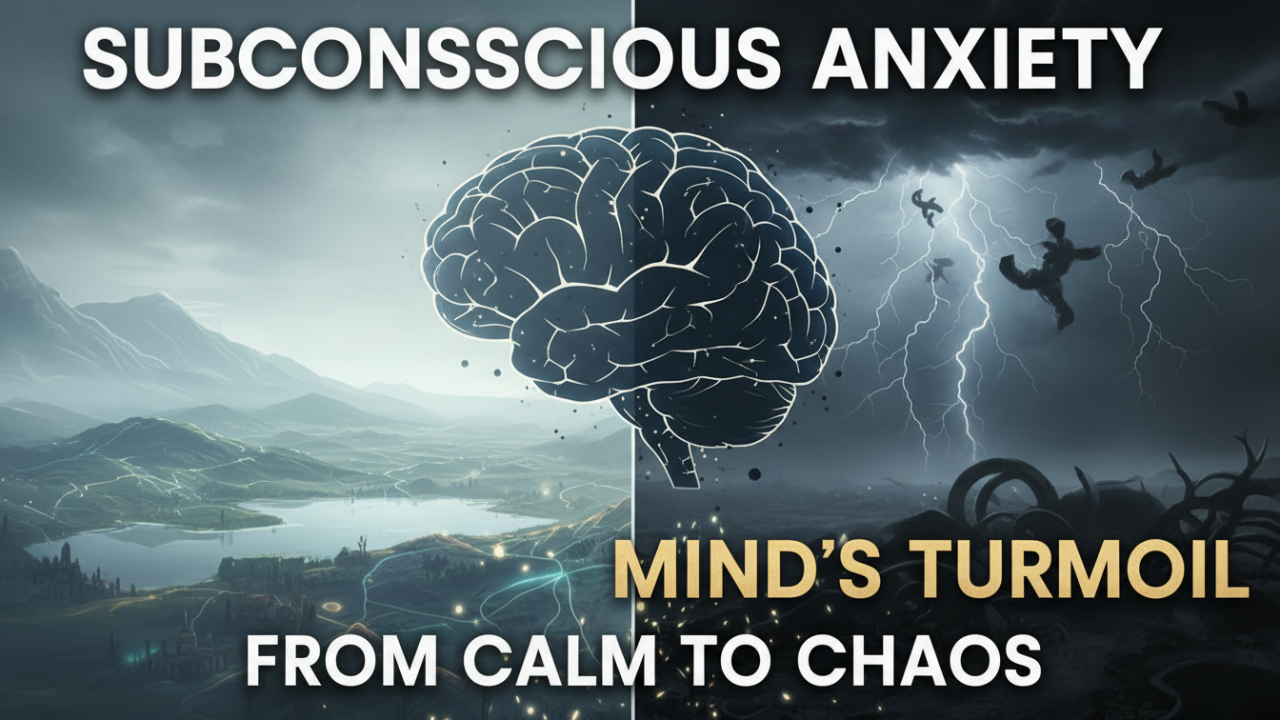Neuroplasticity Hacks starts here. Do you ever feel like your brain just isn’t as sharp as it used to be? Like finding the right word is a little harder, or you’re more forgetful than you were in your 20s and 30s? It’s a quiet fear so many of us get as we cross the 40-year mark, a subtle anxiety about our own minds. Maybe you misplace your keys more often, blank on a familiar name mid-conversation, or feel like multitasking is more of a chaotic juggling act than a skill. These little moments can feel like unsettling signs of an inevitable decline.
For decades, we were told this was just a normal part of aging. The story was that our brains were essentially ‘hardwired’ by early adulthood—they’d peak, and then begin a long, slow, unchangeable slide. It was a narrative of limitation that made brain fog and memory lapses feel like a life sentence, as if our best days of learning and being mentally agile were firmly in the rearview mirror. We’ve been so conditioned to believe this that we often just sigh and accept it, figuring it’s as pointless to fight as the turning of the tides.
But what if that whole story is wrong? What if groundbreaking science proves that inevitable decline is a myth? What if your brain is actually capable of profound change, of growing new pathways, and even becoming stronger—no matter your age?
This isn’t just a motivational platitude. This is the scientific reality of neuroplasticity, and it’s one of the most exciting discoveries in modern neuroscience. It’s the proof that you hold the power to influence your brain’s future. In this video, we’re going to dismantle the myth of the fixed brain. We’ll explore the incredible, verifiable science of neuroplasticity after 40. And most importantly, I’ll give you powerful, science-backed strategies you can start using *today* to take control of your brain’s lifelong journey. So, if you’ve ever felt that twinge of anxiety about your mental sharpness, stick with me. This could fundamentally change how you see your mind and your potential for the rest of your life.
Let’s start by tearing down the old monument. For the longest time, the dogma in neuroscience was that the brain you had in your late twenties was the one you were stuck with. The structure was fixed, the connections set in stone. This idea was taught in medical schools for generations. But a revolution has been quietly taking place in labs all over the world.
Studies have now completely overturned this old belief, showing that the adult brain is anything but fixed. In fact, a major topic of research and debate in the neuroscientific community is the process of adult neurogenesis—the birth of new brain cells. While some studies suggest this process declines sharply with age, others have found evidence that our brains may continue to generate new neurons in the hippocampus—the brain’s hub for learning and memory—even into our 70s and beyond. Think about that. Your brain has a built-in mechanism for renewal that might persist throughout your life. The brain isn’t a static organ; it’s a dynamic, ever-changing landscape.
The science is now undeniable: your brain is constantly remodeling itself in response to your thoughts, actions, and experiences. This capacity is neuroplasticity. And understanding it is the first step toward consciously shaping the brain you want for the next ten, twenty, or fifty years. It’s the key that unlocks a future where you aren’t a passive victim of aging, but an active architect of your own cognitive vitality.

Section 1: The “Magic” Concept – What Exactly IS Neuroplasticity?
So, we’ve established neuroplasticity is real. But what is it? The word sounds complex—”neuro” for neurons, “plastic” for changeable—but the idea is simple: you have a changeable brain.
We used to see the brain like computer hardware. You get a computer, and its motherboard is fixed. You can’t change the wiring. That was the old model. The new neuroplasticity model sees the brain more like a living power grid. Imagine a vast city at night. The brightest highways of light are your well-worn neural pathways—your habits, your ingrained skills. Driving to work the same way every morning strengthens that specific highway.
But what happens when you learn something new? Say, you pick up a guitar or start learning a new language. Every time you practice, you’re sending little construction crews into the city of your brain. At first, they forge a tiny, unpaved footpath. It’s hard to navigate. Your fingers feel clumsy on the strings. The foreign words feel awkward. The neural pathway is new and weak.
But if you keep at it, day after day, that footpath gets wider. It gets paved. Streetlights are installed. Soon, it’s a four-lane highway. The action becomes easier, more automatic. You have physically changed the structure of your brain. You’ve built a strong, efficient neural pathway where one didn’t exist before. This is neuroplasticity in action.
It all boils down to a famous saying in neuroscience: “Neurons that fire together, wire together.” This isn’t just a catchy phrase; it’s the fundamental rule. When you have a thought or perform an action, a specific set of neurons fires in a sequence. Repeat it, and they fire together again. Each time, the connection, or synapse, between them gets stronger and faster. The “wiring” thickens, like upgrading a tiny wire to a high-speed fiber-optic cable.
Conversely, the rule also works in reverse: “Neurons that fire apart, wire apart.” Stop practicing a skill, and the pathway weakens. The road becomes overgrown as your brain reallocates resources to pathways you *are* using. This is why you might forget the Spanish you learned in high school if you don’t use it. The brain is ruthlessly efficient.
Why is this so revolutionary for those of us over 40? Because it demolishes the myth that you can’t teach an old dog new tricks. The science is clear: while plasticity might be fastest in childhood, the capacity for it never goes away. The brain you have today is a work in progress, a reflection of your habits and routines up to this point. But it doesn’t have to be a reflection of your future. You can consciously engage in activities that will rewire your brain for the better. You can, quite literally, change your mind. This is about understanding the physical mechanisms at play and using them to your advantage. It’s about moving from being a passenger in your own cognitive journey to grabbing the steering wheel with both hands.
Section 2: The Scientific Proof – Your Brain on Change After 40
I get that the idea of a changeable brain might still sound a bit like science fiction, especially if you’re feeling the very real effects of getting older. So let’s look at the hard evidence. What is actually happening inside your skull after 40?
First, structural changes. Beyond the debate about creating entirely new neurons, your existing neurons are constantly remodeling. Think of a neuron like a tree with branches (dendrites) that receive signals. When you learn something challenging, these neurons can sprout new branches, allowing them to form more connections, or synapses. More connections create a richer, more resilient neural network. This is a physical, measurable change in your brain’s structure.
Second, functional changes. The most well-known of these is Long-Term Potentiation (LTP), which is the “fire together, wire together” principle at a molecular level. With repeated stimulation, the connection between two neurons becomes stronger and more efficient, a key mechanism for how memories are stored. This process is absolutely preserved in older adults. It might take a bit more repetition than in a younger brain, but the machinery is still active and ready to be used.
Third, network reorganization. A systematic review of scientific literature found that after we turn 40, our brains can start to undergo a significant “rewiring.” In our younger years, the brain often uses highly specialized, separate networks. After 40, there’s a trend for these networks to become more integrated and globally connected. This shows the brain’s remarkable ability to adapt and reorganize itself to function as well as it can with its available resources.
So, what about the challenges? It’s true that some things change. Brain volume can start to shrink slightly in our 30s or 40s, and this can speed up after 60. But here is the crucial, empowering part: these changes are not a uniform destiny. A landmark study from Harvard highlighted that lifestyle factors are critical. Things like diet, exercise, mental health, and life satisfaction can make a huge difference in how the brain ages.
In fact, some abilities can even *improve* in middle age. The Seattle Longitudinal Study, which has tracked thousands of adults for over 50 years, showed that people performed better on tests of verbal abilities, reasoning, and math in their middle years than they did as young adults. Your brain isn’t just declining; it’s maturing and adapting. The proof is overwhelming. Your brain after 40 is not a sinking ship. It’s a dynamic, resilient vessel that responds directly to how you treat it. Neuroplasticity is real, and it gives you the tools to counteract age-related changes and build a brain that thrives.
Section 3: The Actionable Strategies – How to Rewire Your Brain Starting Today
Now we get to the most important part. Knowledge without action is just trivia. The real magic happens when you apply this to your life. So how, specifically, can you build a stronger, sharper brain after 40?
Strategy 1: Move Your Body to Change Your Mind
If there’s a “magic pill” for brain health, it’s physical exercise. The link between physical activity and neuroplasticity is so strong it’s practically non-negotiable.
Aerobic exercise—brisk walking, jogging, swimming—is key. It’s been shown to significantly increase a molecule called Brain-Derived Neurotrophic Factor, or BDNF. Think of BDNF as miracle-gro for your brain. It helps neurons survive and grow and is fundamental to long-term memory.
The evidence is stunning. One famous study found that adults who did brisk walking for 40 minutes, three times a week, for one year, actually increased the volume of their hippocampus by 2%. This effectively reversed one to two years of age-related brain shrinkage in a key memory center. Consistent aerobic exercise doesn’t just slow down brain aging; it can actively reverse key aspects of it.
Find a form of movement you enjoy and make it consistent. A 30-minute brisk walk, a dance class, a bike ride—these are powerful neuroplasticity tools. You’re not just exercising your body; you’re actively fertilizing your brain.
Strategy 2: Embrace Novelty and Lifelong Learning
Your brain thrives on novelty and new challenges. Doing the same thing day in and day out is the cognitive equivalent of eating the same bland food for every meal. To ignite neuroplasticity, you have to step outside your comfort zone.
What does this look like?
* **Learn a new language: Research shows this can strengthen the brain’s “superhighways” that connect different regions, improving problem-solving and creative thinking.
* **Play a musical instrument: This is a full-body workout for the brain, engaging auditory, visual, and motor areas all at once.
* **Pick up a complex hobby: Anything from coding or chess to woodworking or painting works. The key is that it should be complex and require focus. That struggle is the signal to your brain that it needs to grow.
Even small acts of novelty help. Take a different route home. Use your non-dominant hand to brush your teeth. These small disruptions force your brain off autopilot and create moments of neuroplastic activity. Comfort zones are where neural pathways go to stagnate. Challenge is where they go to grow.
Strategy 3: The Power of Sleep and Deep Rest
You can have the best exercise routine and learning plan in the world, but if you neglect sleep, you’re sabotaging your efforts. Sleep isn’t a passive shutdown. It’s an active, critical period of brain maintenance.
During deep sleep, your brain activates a waste-clearance system that flushes out metabolic byproducts. But just as importantly, sleep is when neuroplastic changes are solidified. The brain replays things you learned during the day, strengthening new connections and transferring memories to long-term storage.
Without 7 to 9 hours of quality sleep, this consolidation process is severely impaired. You can learn a new skill, but if you don’t sleep well, the new neural pathways might not stick. Practices that induce “Non-Sleep Deep Rest,” or NSDR, like certain guided meditations, can also be profoundly beneficial. A 20-minute NSDR break after a period of intense focus can significantly enhance your ability to retain new information.
Strategy 4: Master Your Stress
Chronic stress is the kryptonite of neuroplasticity. While short bursts of stress can be focusing, a state of prolonged stress is toxic to the brain, particularly the hippocampus.
When you’re chronically stressed, your body is flooded with cortisol. High levels of cortisol have been shown to damage and shrink the branches on neurons in the hippocampus, making your brain less connected and less capable of learning. It puts your brain into survival mode, diverting resources away from learning and creativity.
This is why managing stress is a fundamental pillar of brain health. One of the most powerful tools for this is mindfulness meditation. Studies have shown that regular mindfulness practice can lead to measurable structural changes in the brain, increasing gray matter density in areas associated with learning and memory. It trains you to observe stressful thoughts without getting carried away, breaking the cycle of reactivity. Even 10-15 minutes a day can start to rewire your brain’s response to stress, creating a much better environment for positive change.
Conclusion
We’ve traveled from the outdated myth of the fixed brain to the empowering frontier of lifelong neuroplasticity. We’ve seen the scientific evidence proving that your brain possesses a remarkable ability to change, adapt, and grow, regardless of your age.
We learned this is a biological reality built on things like sprouting new neural connections and strengthening the ones you already have. We now understand the brain after 40 isn’t in a state of inevitable decline, but one of dynamic adaptation—a process you can actively influence.
The power to do so lies in the strategies we discussed: moving your body, embracing new challenges, prioritizing sleep, and managing stress.
The main message here is one of agency and hope. The fears about cognitive aging are valid, but they don’t have to define your future. You are not a passive observer of your brain’s aging process; you are its co-creator. Every walk you take, every new skill you practice, every night of restful sleep, and every moment of calm is an act of deliberate brain sculpting. You are the artist, and your daily choices are the chisel.
This journey isn’t about a single, dramatic overhaul. It’s about small, consistent actions compounded over time. It’s about choosing growth over stagnation and intention over autopilot. Your brain is listening to your choices, ready and waiting to build the new pathways you ask of it. The scientific proof is in. The only question is, what will you ask it to build next?






